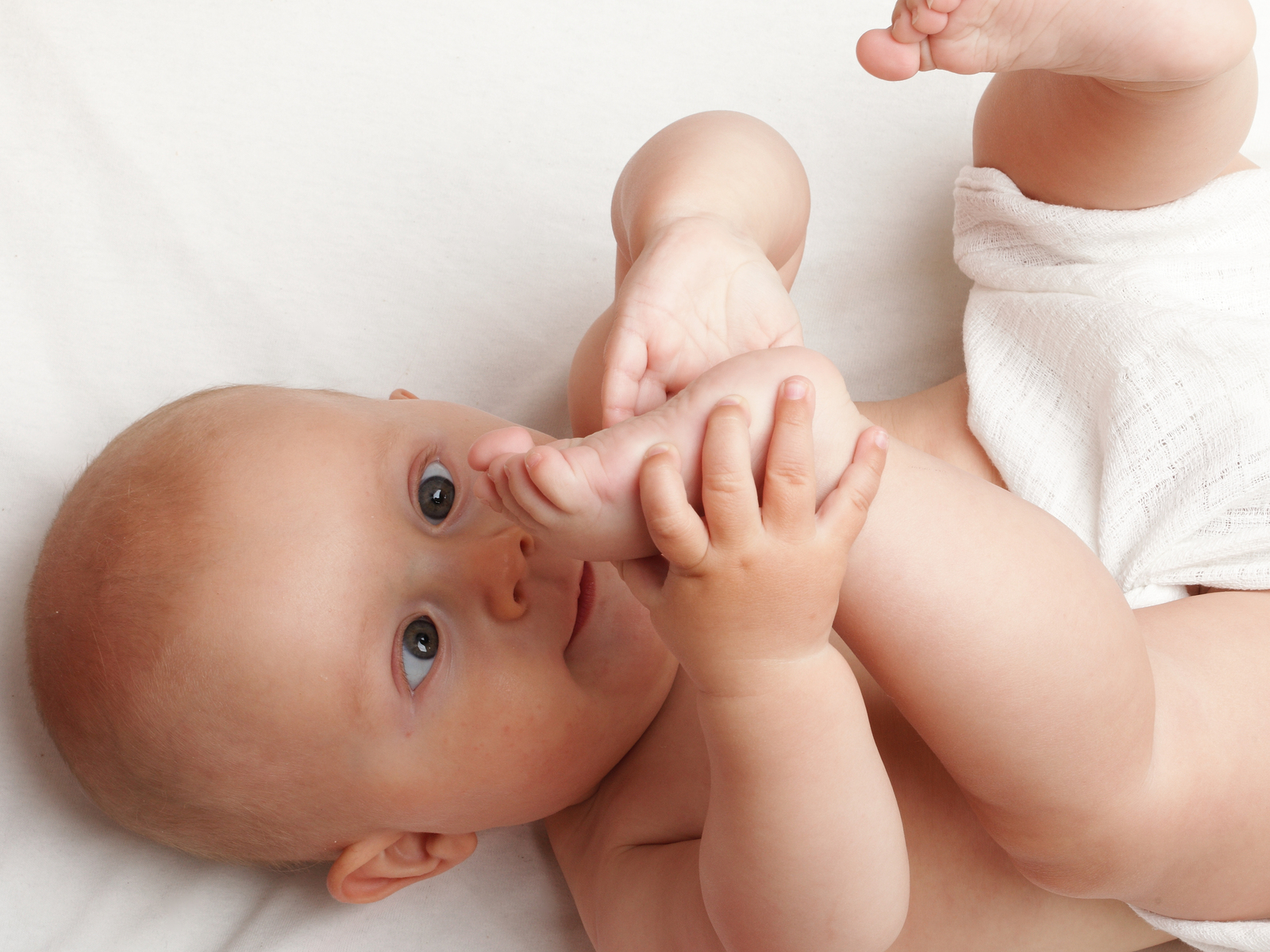At birth, babies have very little control of their arms and hands. They usually wave their arms randomly and keep their hands in a fisted position. They have a strong grasp reflex, as any caregiver who has tried to pry an object from a new baby’s hand can tell you. Not only is the grasp reflex strong, the baby’s ability to release an object from her grip on purpose is not yet developed.
At this level, your infant is learning to lift his or her head and neck.
He or she is moving arms together and apart. Your infant will stare at bright objects and follow them with his or her eyes. High-contrast patterns capture your baby’s interest.
He or she will turn their head toward sounds and voices. By 3 months, your baby smiles at faces and at objects that resemble faces.
Developing Foundations for Fine Motor Skills with Your Infant
Even at this early age, caregivers can help their babies develop stronger muscles and begin to use their eyes and hands together, which is so important for more complex skills down the road. When your baby is awake and alert and comfortably supported, try offering a rattle and holding it about 8” from the baby’s eyes. You may want to shake it once or twice to get the baby’s attention, but then hold it still and let the baby explore it with his eyes and watch how he gets excited and starts waving his arms around. When playing with such a young baby, keep in mind that he will get tired and over-stimulated very quickly and this is perfectly normal. Frequent short play times are what’s best for baby right now. Other ways to play at this age are as follows:
- To attract attention, use toys with bright colors with bold strips and/or patterns, shiny objects (shiny party beads and bangles), or a bright scarf around your neck. All should be presented within 8-12 inches from your baby’s chest.
- For holding eye contact, show your face (make expressions), hold your baby to a mirror, and squeak toys with faces. You can also draw or paste large faces onto paper plates to show your baby.
- To promote active arms, before a offering a toy, hold or suspend it about 8 inches from your baby’s chest to create excitement at seeing you and the toy.
- To encourage visual tracking, use toys, a bottle, or a mobile with sounds and bright colors moving in all directions slowly. Visual tracking is hard work. Play for only 1-2 minutes.
- To bring hands to chest or midline, carry your baby cradled with arms forward, encourage exploring and touching your face (kiss or nibble fingers for more feedback). After a bath, massage your baby’s hand with lotion and rub hands together, place a textured toy on your baby’s chest to feel.
- To promote grasping, use rattles with slender handles, teethers, or your finger. Help your baby hold object in one hand at a time because it is difficult to hold an object in both hands at this age. Offer rattles during diaper change or small cut sponge during bath.

